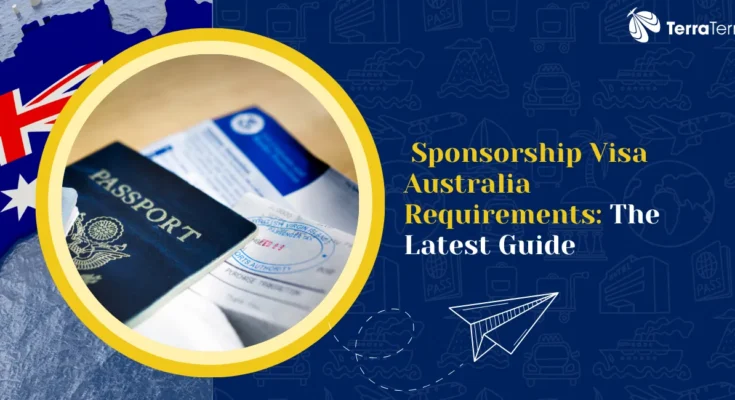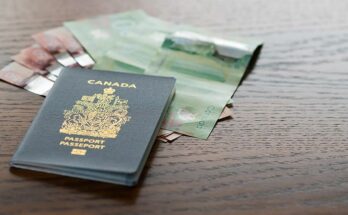Australia is one of the most attractive destinations for immigrants seeking new career opportunities. With a robust economy, high demand for skilled workers, and a welcoming multicultural society, Australia offers a range of work visas designed to attract global talent. However, to work legally in Australia, immigrants must obtain the appropriate work visa.
Let’s explore the various work visa options available, eligibility criteria, and how to secure visa sponsorship.
Types of Work Visas in Australia
Australia offers multiple work visa categories tailored to different needs and skillsets. Understanding these options will help you determine which visa suits your situation.
- Skilled Migration Visa: Ideal for professionals with qualifications and experience in high-demand fields.
- Employer-Sponsored Visa: Allows companies to sponsor foreign workers to fill critical skill gaps.
- Temporary Skill Shortage (TSS) Visa: Designed to address immediate labor shortages.
- Working Holiday Visa: A unique option for young travelers to work while exploring Australia.
Each visa type comes with its own requirements and benefits, so it’s important to evaluate your eligibility before applying.
Skilled Migration Visa (Subclass 189, 190, 491)
The Skilled Migration Visa is an excellent pathway for highly qualified professionals who want to work and live permanently in Australia.
- Subclass 189 (Skilled Independent Visa): This visa does not require employer sponsorship and is points-tested.
- Subclass 190 (Skilled Nominated Visa): Applicants must be nominated by an Australian state or territory.
- Subclass 491 (Skilled Work Regional Visa): Designed for those willing to work in regional areas.
Eligibility Requirements:
- A positive skills assessment in an eligible occupation
- Meeting the minimum points threshold
- Proficiency in English (e.g., IELTS score of 6+)
This visa type grants access to permanent residency, healthcare, and other benefits after meeting specific conditions.
Employer-Sponsored Visa (Subclass 186 and 482)
The Employer-Sponsored Visa allows Australian businesses to hire skilled foreign workers when local talent is unavailable. The main visa subclasses include:
- Subclass 186 (Employer Nomination Scheme): For permanent positions with sponsorship from an Australian employer.
- Subclass 482 (Temporary Skill Shortage Visa): A temporary visa for filling urgent labor needs.
How to Secure a Sponsorship:
- Research Australian companies authorized to sponsor foreign workers.
- Apply for job openings that mention “visa sponsorship available.”
- Strengthen your resume to reflect Australian employment standards.
This pathway can lead to permanent residency under certain conditions.
Temporary Skill Shortage (TSS) Visa
The TSS visa (Subclass 482) addresses immediate skill shortages by allowing employers to bring in overseas workers on either a short-term or medium-term basis.
- Short-term stream: Valid for up to 2 years and renewable once.
- Medium-term stream: Valid for up to 4 years and offers a pathway to permanent residency.
Eligible occupations for the TSS visa are listed on the government’s Skilled Occupation Lists (SOL).
Key Requirements:
- Job offer from a sponsoring employer
- Skills and qualifications matching the occupation
- Relevant work experience and English proficiency
This visa allows holders to bring their dependents and work across various sectors, including healthcare, construction, and IT.
Working Holiday Visa (Subclass 417 and 462)
If you’re between 18 and 35 years old and want to experience Australia’s vibrant culture, the Working Holiday Visa might be perfect for you. This visa enables young travelers to work short-term jobs while exploring the country.
Countries Eligible:
- Subclass 417: Countries like the UK, Canada, Germany, and others
- Subclass 462: Countries including the US, China, and Indonesia
Conditions:
- Maximum duration of 12 months (with possible extensions)
- Permission to work in one job for up to 6 months
This program is a great way to gain international work experience while enjoying Australia’s natural beauty and dynamic cities.
Eligibility Criteria for Australian Work Visas
Meeting the eligibility criteria is crucial for a successful visa application. Common requirements include:
- English Proficiency: Achieve the required score on tests like IELTS, PTE, or TOEFL.
- Skills Assessment: Obtain verification from an authorized skills assessment body.
- Health and Character: Undergo medical examinations and police checks to meet Australian standards.
These requirements ensure that applicants can contribute effectively to the local workforce.
How to Find Visa Sponsorship Jobs
Finding visa sponsorship jobs in Australia can be challenging, but it’s achievable with the right approach. Many companies are open to sponsoring skilled workers due to labor shortages in specific industries. Here’s how you can increase your chances of landing a sponsored job.
- Use Job Boards: Websites like SEEK, Indeed, and LinkedIn often have listings specifically for visa sponsorship jobs. Use search terms like “visa sponsorship available” or “TSS sponsorship” to filter relevant positions.
- Explore Industry-Specific Opportunities: Focus on industries experiencing a skills shortage, such as healthcare, IT, construction, and education. Companies in these sectors are more likely to offer sponsorship.
- Network: Build connections through LinkedIn, professional associations, and industry events. Networking can help you learn about unadvertised job opportunities and increase your visibility with potential employers.
- Tailor Your Resume: Ensure your resume aligns with Australian standards. Highlight your skills, experience, and any certifications that match the job requirements.
- Work with Recruitment Agencies: Specialized recruitment agencies can help match your profile with employers seeking foreign talent. Many agencies are experienced in helping candidates secure visa sponsorship.
By being proactive and strategic, you can improve your chances of finding a job that offers sponsorship.
Required Documentation for Visa Application
When applying for an Australian work visa, you’ll need to provide specific documents to support your application. Missing or incorrect paperwork can lead to delays or even rejections, so it’s crucial to be thorough.
Essential Documents Include:
- Passport: A valid passport with at least six months of validity remaining.
- Skills Assessment Report: Proof that your qualifications meet Australian standards for your occupation.
- English Proficiency Test Results: Test scores from IELTS, PTE, or TOEFL, depending on visa requirements.
- Offer Letter or Sponsorship Agreement: For employer-sponsored visas, an official job offer from the sponsoring company.
- Health and Police Clearance: Medical exams and police certificates to verify your health and character status.
Tips for a Smooth Application Process:
- Double-check that all documents are up-to-date and certified if necessary.
- Submit your application online through the Australian Department of Home Affairs portal.
- Keep track of deadlines and follow up regularly to avoid unnecessary delays.
Being organized and prepared can significantly increase your chances of visa approval.
Application Process for Australian Work Visas
The process of applying for a work visa in Australia involves several steps, each requiring attention to detail. Here’s a breakdown of the process to help you navigate it successfully.
- Determine Your Eligibility: Review the criteria for the visa type you’re applying for. Ensure you meet the requirements related to skills, qualifications, and language proficiency.
- Gather Documentation: Collect all necessary documents, including your passport, skills assessment, and test results. Make sure everything is formatted correctly according to Australian standards.
- Submit an Expression of Interest (EOI): For skilled migration visas, you may need to submit an EOI through SkillSelect. This step allows Australian employers and states to review your profile.
- Apply for the Visa: Once invited, you can lodge your visa application online. Pay the applicable fees and attach your documents through the Department of Home Affairs website.
- Attend Health and Character Checks: Complete medical examinations and provide police certificates as required. These checks ensure you meet Australia’s health and security standards.
- Wait for a Decision: Processing times vary depending on the visa type and your circumstances. You can check the status of your application through the online portal.
By following these steps carefully, you can reduce the risk of application errors and improve your chances of a positive outcome.
Priority Skilled Occupation List (SOL)
The Skilled Occupation List (SOL) plays a critical role in Australia’s immigration system. It highlights professions that are in high demand across the country and serves as a guide for applicants seeking work visas.
Categories of the SOL:
- Medium and Long-term Strategic Skills List (MLTSSL): Professions eligible for long-term visas and permanent residency.
- Short-term Skilled Occupation List (STSOL): Jobs with temporary opportunities under the TSS visa.
- Regional Occupation List (ROL): Positions in regional areas offering special incentives, such as additional points for permanent residency pathways.
Examples of In-Demand Occupations:
- Healthcare professionals (nurses, doctors, aged care workers)
- Engineers (civil, mechanical, electrical)
- IT specialists (software developers, cybersecurity experts)
- Tradespeople (plumbers, electricians, carpenters)
If your occupation is on the SOL, you have a higher chance of qualifying for a work visa and possibly permanent residency.
Benefits of Working in Australia
Working in Australia offers numerous benefits, making it a top choice for immigrants. From professional growth to an exceptional quality of life, here’s what you can expect.
- Economic Opportunities: Australia has a strong and diverse economy with job openings across various sectors. Skilled professionals can find lucrative positions with competitive salaries.
- Work-Life Balance: Australians value a healthy work-life balance. Many employees enjoy flexible working hours, generous leave policies, and access to world-class recreational facilities.
- Cultural Diversity: Australia is known for its multiculturalism. As an immigrant, you’ll have the opportunity to experience a rich blend of cultures, cuisines, and festivals.
- Pathways to Permanent Residency: Many work visas provide a pathway to permanent residency, which offers long-term stability, healthcare benefits, and education opportunities for your family.
By choosing to work in Australia, you’ll not only advance your career but also enjoy a well-rounded lifestyle.
Challenges Immigrants May Face
While Australia offers plenty of opportunities, immigrants may face some challenges during their relocation and job search.
- Job Market Competition: In-demand jobs can attract many applicants, including local residents. To stay competitive, immigrants may need to gain additional certifications or improve their networking efforts.
- Cultural Adaptation: Adjusting to a new work culture and social norms can be overwhelming at first. Understanding Australian workplace etiquette and communication styles can help ease the transition.
- Visa Application Rejections: If your application is rejected, it can be disheartening. However, you can often reapply after addressing the reasons for rejection, such as improving your documentation or meeting eligibility criteria.
By staying resilient and proactive, you can overcome these obstacles and thrive in your new environment.
Pathways to Permanent Residency
Many immigrants working in Australia aim to secure permanent residency (PR) for long-term benefits and stability. Several work visa types offer PR pathways, including:
- Subclass 189 (Skilled Independent Visa): A points-based visa with no sponsorship requirement.
- Subclass 190 (Skilled Nominated Visa): Requires nomination by an Australian state or territory.
- Employer-Sponsored PR: Available through the Employer Nomination Scheme (ENS) after working for a specified period.
Permanent residency grants access to healthcare, education, and the ability to sponsor family members for migration.
Costs Involved in the Visa Process
Applying for a work visa in Australia involves several costs, which vary depending on the visa type and number of applicants (main applicant, spouse, dependents). Understanding these expenses helps you plan your budget effectively.
Key Costs Include:
- Visa Application Fees: The fees depend on the visa subclass. For example, a Skilled Migration Visa (Subclass 189) can cost over AUD 4,000 for the main applicant. Additional charges apply for each dependent.
- Skills Assessment Fees: You may need to pay for a skills assessment from a recognized authority, especially for skilled migration visas. Fees can range from AUD 300 to AUD 1,000, depending on the occupation and assessing body.
- English Proficiency Test Fees: Tests like IELTS, PTE, or TOEFL require registration fees, typically ranging from AUD 200 to AUD 400.
- Health Examination Fees: Applicants must undergo medical exams to meet health requirements. This can cost around AUD 300 to AUD 500 per person, depending on the tests required.
- Police Clearance Certificates: You’ll need police certificates from each country where you’ve lived for more than a year. Costs vary by country but can range from AUD 50 to AUD 150.
- Migration Agent Fees (Optional): If you choose to work with a migration agent, expect additional costs for their services. Fees can range from AUD 2,000 to AUD 10,000, depending on the complexity of your case.
Tips to Manage Costs:
- Start early to avoid last-minute fees and delays.
- Budget for unexpected expenses, such as document translations or resubmissions.
- Check for any visa application fee waivers or financial assistance programs offered by Australian states or territories.
By preparing for these costs in advance, you can navigate the visa process with fewer financial surprises.
FAQs about Australia Work Visa for Immigrants
1. What types of work visas are available in Australia for immigrants?
Australia offers several types of work visas, including Temporary Skill Shortage (TSS) Visa (subclass 482), Employer Nomination Scheme (ENS) Visa (subclass 186), and Regional Sponsored Migration Scheme (RSMS) Visa (subclass 187). Each caters to different skills, occupations, and conditions.
2. How can I apply for an Australian work visa?
To apply for a work visa in Australia, you must first have a job offer from an Australian employer who is willing to sponsor you. The next steps involve the employer lodging a nomination for you and you submitting a visa application through the Australian Government’s Department of Home Affairs website, where you will need to provide personal details, employment history, and supporting documents.
3. What are the requirements for obtaining a work visa in Australia?
Requirements vary by visa type but generally include having a valid job offer from an approved employer, meeting skill and qualification requirements, passing health and character checks, and having competent English language skills. Specific visas may have additional requirements, such as age limits or regional employment stipulations.
4. How long does it take to process an Australian work visa?
Processing times can vary greatly depending on the type of visa and the volume of applications received. Generally, TSS visas can take from a few weeks to several months, while permanent visas like the ENS and RSMS may take longer due to more stringent requirements.
5. Can I bring my family with me on an Australian work visa?
Most Australian work visas allow you to include family members in your application as secondary applicants. They must meet health and character requirements, and you must demonstrate the ability to support them financially during their stay in Australia.
6. What are my rights as an employee in Australia on a work visa?
Employees in Australia on a work visa have the same workplace rights as Australian citizens and permanent residents. These rights include fair pay, safe working conditions, and access to benefits such as annual leave, sick leave, and healthcare. It’s important to understand your rights and obligations before starting work in Australia.
7. Can I apply for permanent residency after working in Australia?
Many temporary work visas offer pathways to permanent residency, depending on your occupation, length of employment, and other factors. Programs such as the ENS and RSMS directly provide permanent residency options, while other visas may require transitioning through extended work periods or additional qualifications.
8. Where can I find more information about working and living in Australia?
For detailed information about working and living in Australia, visit the official Australian Government Department of Home Affairs website. Additionally, many migration agents and resources online can provide guidance and assistance in navigating the visa application process and settling in Australia.
Conclusion
Australia offers incredible opportunities for immigrants seeking career growth, stability, and a better quality of life. However, obtaining a work visa requires thorough preparation, from selecting the right visa type to meeting eligibility criteria and gathering essential documents. Whether you pursue a Skilled Migration Visa, an employer-sponsored route, or a Working Holiday Visa, understanding the process can significantly increase your chances of success.
With proper research, networking, and persistence, you can secure your dream job in Australia and potentially pave the way for permanent residency. So, take the first step today—your Australian adventure awaits!



